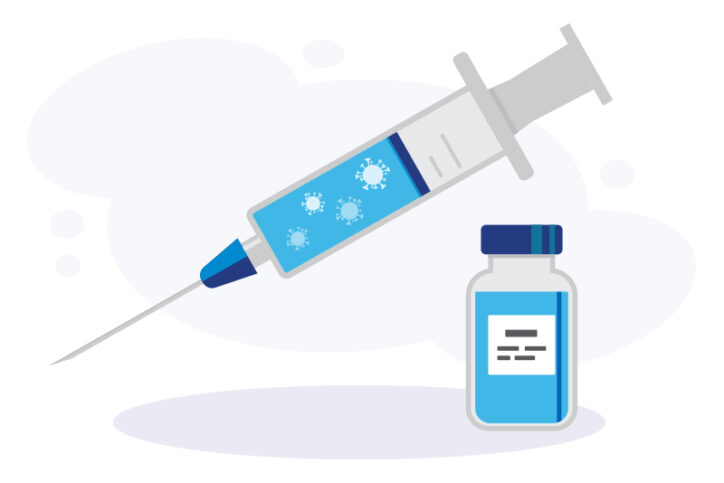Using germs against themselves: How vaccines work

Germs are all around us. When a germ (in the form of virus or bacteria) enters your body, it tries to make you sick. Some germs cause minor colds, but others can cause serious disease.
Fortunately, your immune system is your body’s internal defense system. It protects you by creating immune cells (T cells) and antibodies that recognize and attack invading germs and escort them out of your body.
Different T cells and antibodies work against different germs. If a new germ comes along, your immune system needs time to create new T cells and antibodies. Unfortunately, this gives new germs an opening to make you sick. Vaccines can prevent that.
Getting a jump on germs
Vaccines use germs against themselves. By using a weakened or inactive version of a germ or a piece of a germ, the vaccine shows your immune system how the germ works and how to attack it.
If your immune system were a sports team, a vaccine would be like a secret copy of an opponent’s playbook — it tells your immune system what their plays are and how to block them.



Different germs, different vaccines
Different vaccines work in different ways based on the germs they’re fighting. One way or another, they all teach your immune system how to protect you against illness.
- Live, attenuated vaccines contain a weakened version of a virus or bacteria. The germ is too weak to cause disease in a healthy person, but it gives your immune system enough information to create T cells and antibodies to fight off a full attack. While this type of vaccine is very effective, anyone with a compromised immune system should talk with their doctor about whether the vaccine is safe for them. Examples: Measles, mumps, and rubella (MMR) vaccine, chickenpox vaccine
- Non-live vaccines contain an inactive (dead) version of a germ. Much like live vaccines, non-live vaccines give your immune system a chance to build up antibodies against a specific germ. Often, it takes several doses over many years to build up or maintain immunity from this type of vaccine. Example: Polio vaccine
- Subunit vaccines use a piece of a germ to teach your immune system what to do in case a full germ shows up. Example: Whooping cough vaccine
- mRNA vaccines use a type of molecule called messenger RNA (mRNA) that helps produce protein. mRNA vaccines prompt your body to produce proteins that resemble the protein on the outside of a virus. Your immune system then creates T cells and antibodies that recognize and attach to these proteins and destroy the virus. The mRNA molecules leave your body, but the T cells and antibodies remain. Example: COVID-19 vaccine
- Toxoid vaccines prevent diseases like diphtheria and tetanus that create toxins (poison) inside your body. The vaccine contains a weakened version of the toxin called a toxoid that shows your immune system how fight off toxins created by the germs. Examples: Diphtheria and tetanus vaccines
When vaccines require more than one dose
Many vaccines are most effective when given in more than one dose.
- With some vaccines, repeat doses help the immune system build up a stronger response.
- Some vaccines wear off over time.
- Some germs, like the flu virus, change over time so the vaccines have to be updated to remain effective against them.
Your child’s doctor should have a record of your child’s vaccinations and be able to tell you when your child is due for a follow-up vaccine.
Learn more about the Division of Infectious Diseases.
Related Posts :
-

Beyond COVID-19: Why kids need other vaccines, too
As you consider immunizing your child, it’s natural to have questions about the safety and effectiveness of vaccines. But ...
-

COVID-19 vaccines are now available for kids under 5. Here’s what parents should know.
Children under age 5 can now be vaccinated against COVID-19. The Centers for Disease Control and Prevention (CDC) recently approved the ...
-

Two for one: It’s safe to get COVID and flu vaccines at the same time
Your child can greatly reduce the risk of serious illness by receiving COVID and flu vaccines in one sitting — all ...
-

The polio outbreak of 1955: Lessons from an epidemic
“This is going to be a tough year.” Claire McCarthy was a young physical therapist in early March 1955 when orthopedic ...





